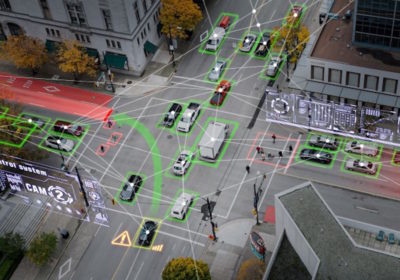Smart grids powered by AI are revolutionizing how cities generate and distribute electricity and predictive intelligence keeps urban energy stable, efficient, and low-carbon

Energy is the invisible lifeblood of modern cities. Every light switched on, every electric vehicle charging, every data center operating — all contribute to a growing and increasingly unpredictable demand. Traditional power grids were never designed for this complexity. They distribute energy in one direction, from producer to consumer, following static patterns that often fail to adapt to rapid fluctuations in use. As cities grow smarter, this old model is being replaced by AI-driven smart grids capable of balancing energy dynamically, efficiently, and in real time.
A smart grid integrates sensors, IoT devices, and artificial intelligence to monitor and regulate the flow of electricity across an entire urban ecosystem. Instead of responding manually to changes in consumption, these systems use machine learning algorithms to predict demand, optimize distribution, and prevent overloads before they happen. The result is an infrastructure that doesn’t just transport energy — it understands it.
How do they work? Smart grids use a combination of digital technology, including smart meters, communication networks, and control systems. Sensors and advanced software provide a “panoramic view” of grid operations, allowing for intelligent scheduling and optimal management, then, the system can detect fluctuations and automatically adjust to changes in energy supply and demand. For example, a smart grid can use a household’s smart meter and a home area network (HAN) to communicate with smart appliances. The HAN can then shift the operation of devices like dishwashers or electric vehicle chargers to off-peak hours, reducing overall demand on the grid.
At the heart of this transformation is data. Smart meters installed in homes, offices, and public facilities send continuous streams of information about consumption patterns. AI systems analyze this data to identify trends, anomalies, and inefficiencies. For instance, they can detect when a neighborhood’s energy demand is about to peak and automatically reroute power from nearby areas with lower usage. This kind of predictive balance minimizes waste and reduces the likelihood of blackouts, making the urban grid more resilient and sustainable.
Artificial intelligence also plays a crucial role in integrating renewable energy sources into the system. Solar and wind generation are inherently variable — they depend on weather conditions that change by the hour. AI models trained on meteorological data can anticipate these fluctuations and adjust the grid accordingly, storing excess energy during high production and releasing it when generation drops. This capability is essential for achieving carbon-neutral cities and transitioning to sustainable energy models.
Another important dimension of smart grids is their self-healing ability. When a fault or outage occurs, AI can identify the problem’s location, isolate the affected area, and reroute power automatically, restoring service in seconds. In traditional systems, this process could take hours and require human intervention. Now, it happens instantly, supported by real-time diagnostics and predictive maintenance models that learn from every event to prevent future failures.
Smart grids also connect directly with citizens. Home energy management systems powered by AI can suggest optimal consumption habits, detect unusual patterns that may indicate malfunctioning appliances, and even coordinate charging times for electric vehicles to avoid stressing the grid. In essence, each user becomes an active node within a collaborative energy network, where the line between producer and consumer begins to blur.

However, these advances also raise governance and security challenges. The enormous volume of data generated by smart grids must be managed responsibly, ensuring privacy, transparency, and cybersecurity. A single vulnerability could allow attackers to manipulate entire portions of the network. Building public trust is therefore as important as achieving technical efficiency. Cities must adopt open data standards and clear communication strategies that explain how AI decisions are made and how citizens benefit from them.
From an economic perspective, the shift to AI-driven grids represents a long-term investment in resilience. Although implementation requires significant initial costs, the reduction in energy losses, operational failures, and carbon emissions leads to savings that justify the effort. Moreover, smart grids generate new insights that can inform urban planning, climate adaptation, and infrastructure design, linking energy management with broader sustainability strategies.
In the coming years, as electrification accelerates and renewable sources dominate, cities will depend increasingly on the intelligence of their grids. Artificial intelligence turns the electrical infrastructure into a responsive system — one that senses, predicts, and acts. It’s not just about keeping the lights on; it’s about creating an adaptive urban metabolism, where energy flows as efficiently and intelligently as information itself.



